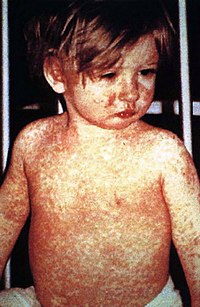
Photo from wikipedia
Epidermodysplasia verruciformis (EDV) is a rare, autosomal recessive, genetic disorder of immune dysregulation characterized by increased susceptibility to cutaneous human papilloma virus infections. It was first described by Lewandowsky and… Click to show full abstract
Epidermodysplasia verruciformis (EDV) is a rare, autosomal recessive, genetic disorder of immune dysregulation characterized by increased susceptibility to cutaneous human papilloma virus infections. It was first described by Lewandowsky and Lutz in 1922 as a form of epidermal nevus. Its association with skin cancers was proposed by Sullivan and Ellis in 1939. Initial lesions often occur in childhood and are of two types; lifelong eruptions of pityriasis versicolor like lesions and flat wart like papules. The latter is characterized by malignant transformation in 35%–50% of patients especially after 40–50 years of age. Bowen disease is the most common tumor followed by invasive squamous cell carcinoma, however, metastasis is rarely encountered.
Journal Title: International Journal of Mycobacteriology
Year Published: 2021
Link to full text (if available)
Share on Social Media: Sign Up to like & get
recommendations!